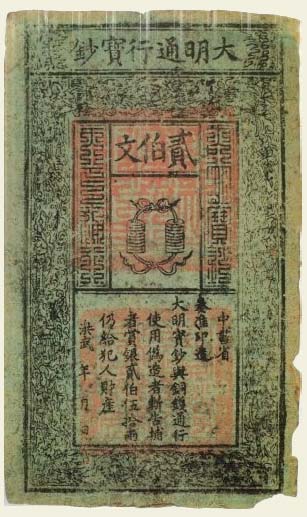What Kind of Paper is Money Made of?
- By Andrew Jacobs
- Jan 24, 2014
Does Money Grow on Trees?
Money money money! We all want it, some of us have it and some of us don't. Some of us have more than others (feel free to send some my way), but the bottom line is, we all need it. But what exactly IS this currency we stuff into our wallets and purses? Unfortunately it isn't regular computer paper or we'd really be rolling in it here at JAM. Paper money is made from 75% cotton and 25% linen fibers. Back in days of old, around 1870, congress decided to officially establish a US Department of Treasury. That was of course because money was made of parchment paper and was extremely easy to duplicate. Now, it isn't so easy. Have you seen the new Benjamins? Don't go trying to print that. But if you do, here's a link to some of our green paper.
Here's a few other fun facts about cash money.
1. $20 bills last in circulation for about two years.
2. Pocahontas appeared on the back of the $20 in 1875
Don't go trying to print that. But if you do, here's a link to some of our green paper.
Here's a few other fun facts about cash money.
1. $20 bills last in circulation for about two years.
2. Pocahontas appeared on the back of the $20 in 1875
 3. Ever hear money referred to as a "buck?" Back before cash currency, animal skins including bucks (male deer) were used as tender.
4. A piece of currency can be folded forward and back 4,000 times before it will tear.
5. A study done in 2009 discovered 90% of all money has traces of cocaine somewhere on it.
6. The dollar bill has a lifespan of roughly 21 months.
7. It costs 2.41 cents to create a penny.
8. The Secret Service was created during the civil war to prevent counter-fitting.
9. The worlds first paper currency was created in China 1,400 years ago.
3. Ever hear money referred to as a "buck?" Back before cash currency, animal skins including bucks (male deer) were used as tender.
4. A piece of currency can be folded forward and back 4,000 times before it will tear.
5. A study done in 2009 discovered 90% of all money has traces of cocaine somewhere on it.
6. The dollar bill has a lifespan of roughly 21 months.
7. It costs 2.41 cents to create a penny.
8. The Secret Service was created during the civil war to prevent counter-fitting.
9. The worlds first paper currency was created in China 1,400 years ago.
 10. Bob Marley's final words to his son Ziggy were "Money Can't Buy Life."
10. Bob Marley's final words to his son Ziggy were "Money Can't Buy Life."What Kind of Paper is Money Made of?
Have you ever wondered what kind of paper is used to make money? The paper used for currency is not your typical paper; it is actually a blend of cotton and linen fibers. This unique combination gives the paper a distinct feel and durability, making it difficult to counterfeit. The use of this special paper also allows for the incorporation of various security features, such as watermarks and security threads, to prevent fraud. Understanding the composition of money paper provides insight into the intricate measures taken to ensure the integrity of our currency.
Benefits of Using Cotton and Linen Paper for Currency
The use of cotton and linen fibers in money paper offers several benefits. These natural materials provide a high level of strength and durability, making the currency resistant to wear and tear. Additionally, the unique texture of the paper makes it easy to detect counterfeit bills, as it is difficult to replicate. The incorporation of security features, such as watermarks and security threads, further enhances the authenticity of the currency, instilling confidence in its value.
Use Cases for Cotton and Linen Paper in Currency
Aside from its use in currency, cotton and linen paper are also utilized in various official documents, such as passports, visas, and certificates. The strength and durability of this paper make it ideal for important documents that require longevity and security. Its distinct texture and resistance to aging make it a preferred choice for items that need to withstand the test of time.
Alternatives to Cotton and Linen Paper for Currency
While cotton and linen paper are the primary materials used for currency, some countries have adopted polymer banknotes as an alternative. These banknotes are made from a durable polymer substrate, offering enhanced security features and longevity. However, the traditional blend of cotton and linen fibers remains the standard for many global currencies due to its proven track record of reliability and security.
Tips for Handling Currency Made of Cotton and Linen Paper
When handling currency made of cotton and linen paper, it is important to treat it with care to maintain its integrity. Avoid folding or crumpling bills, as this can lead to premature wear and tear. Additionally, be mindful of exposing the currency to excessive moisture or heat, as these elements can compromise its quality. By handling money with care, you can contribute to its longevity and ensure its continued authenticity.
Understanding the Security Features of Currency Paper
One of the fascinating aspects of currency paper is the incorporation of various security features to prevent counterfeiting. From watermarks to security threads, these elements play a crucial role in distinguishing genuine currency from counterfeit bills. By familiarizing yourself with these security features, you can confidently identify authentic currency and protect yourself from fraudulent attempts. This knowledge empowers individuals and businesses to safeguard their financial transactions and uphold the integrity of the monetary system.
















